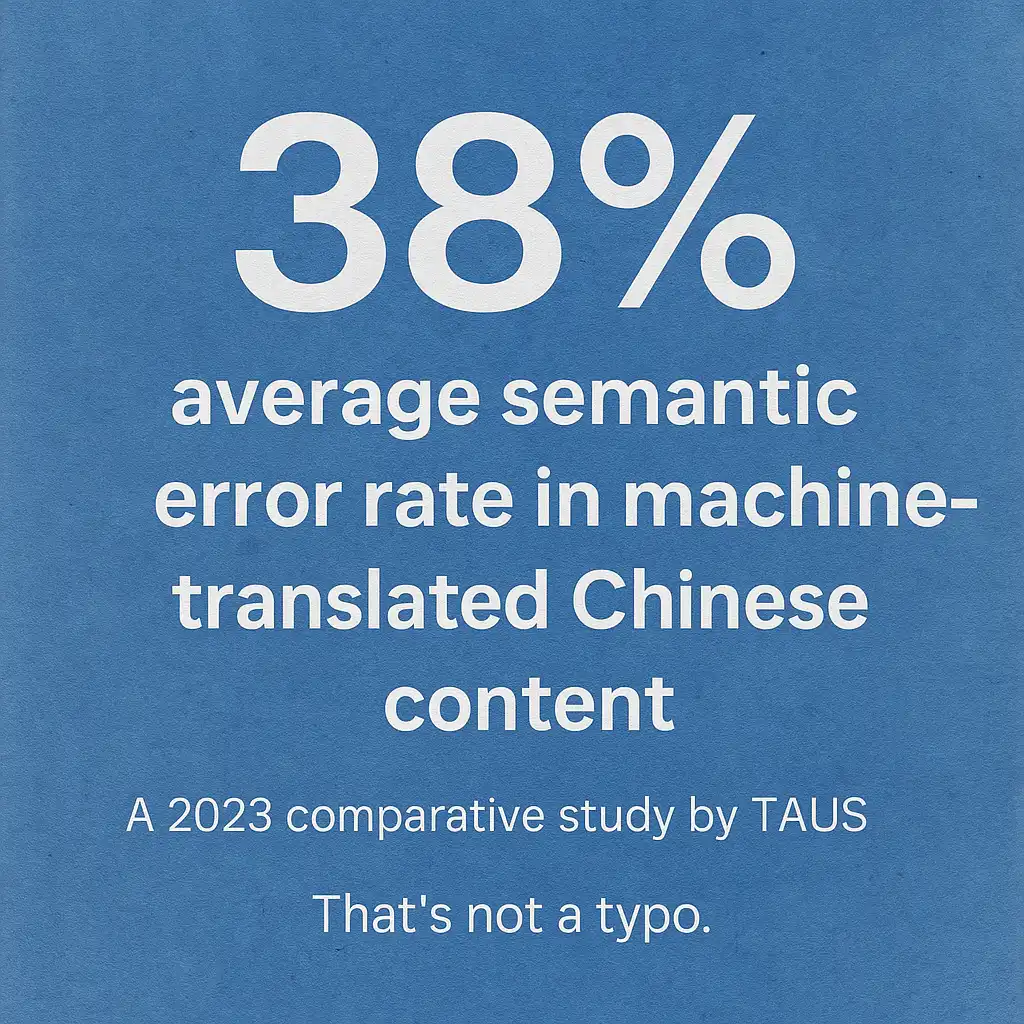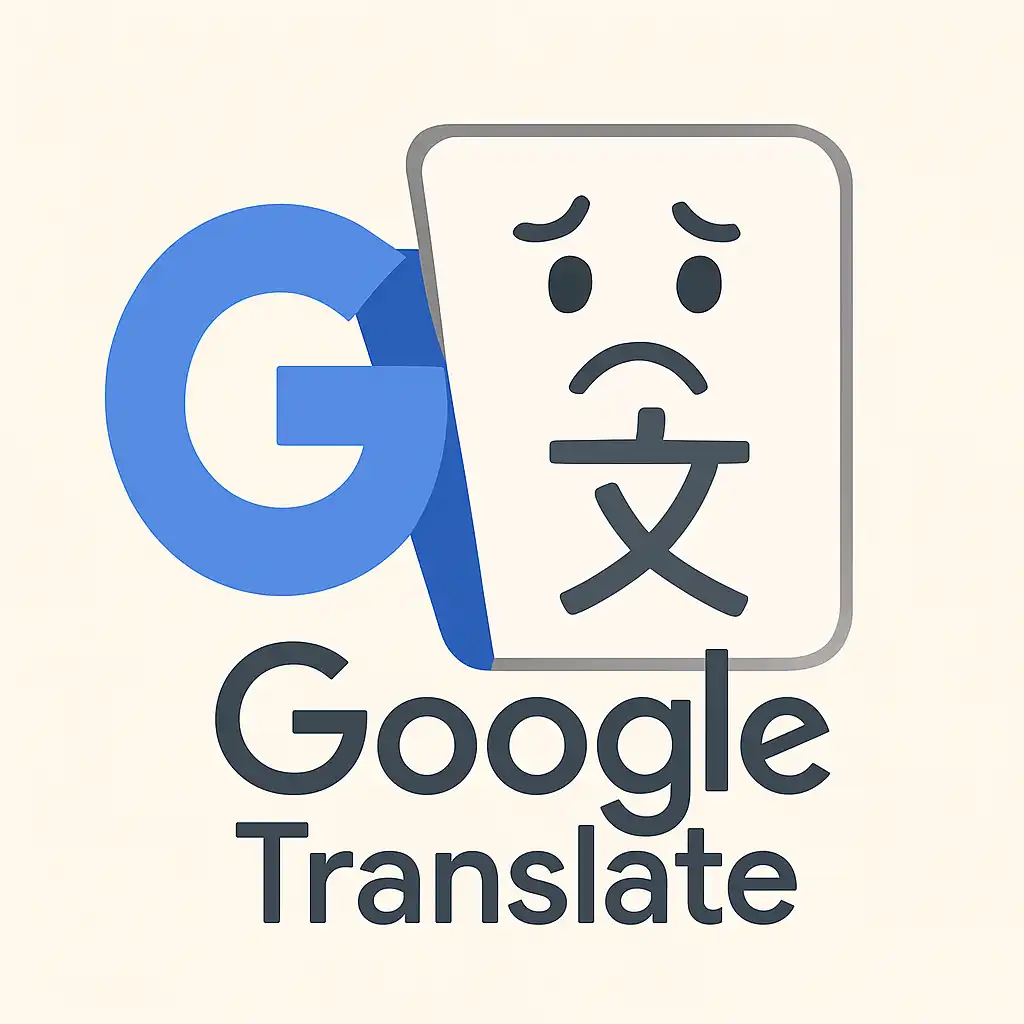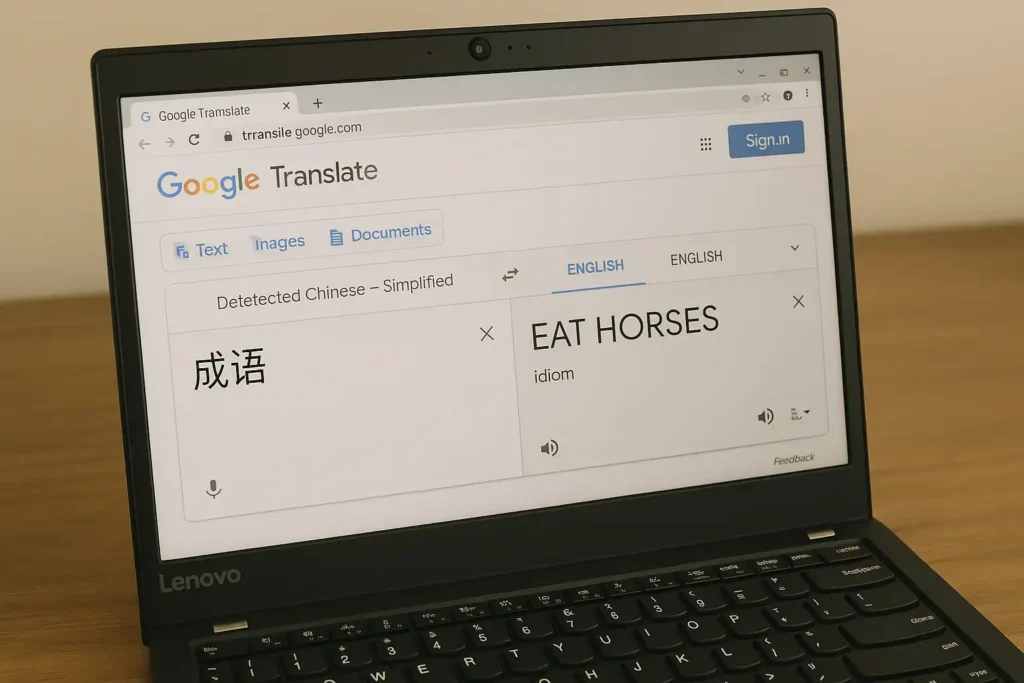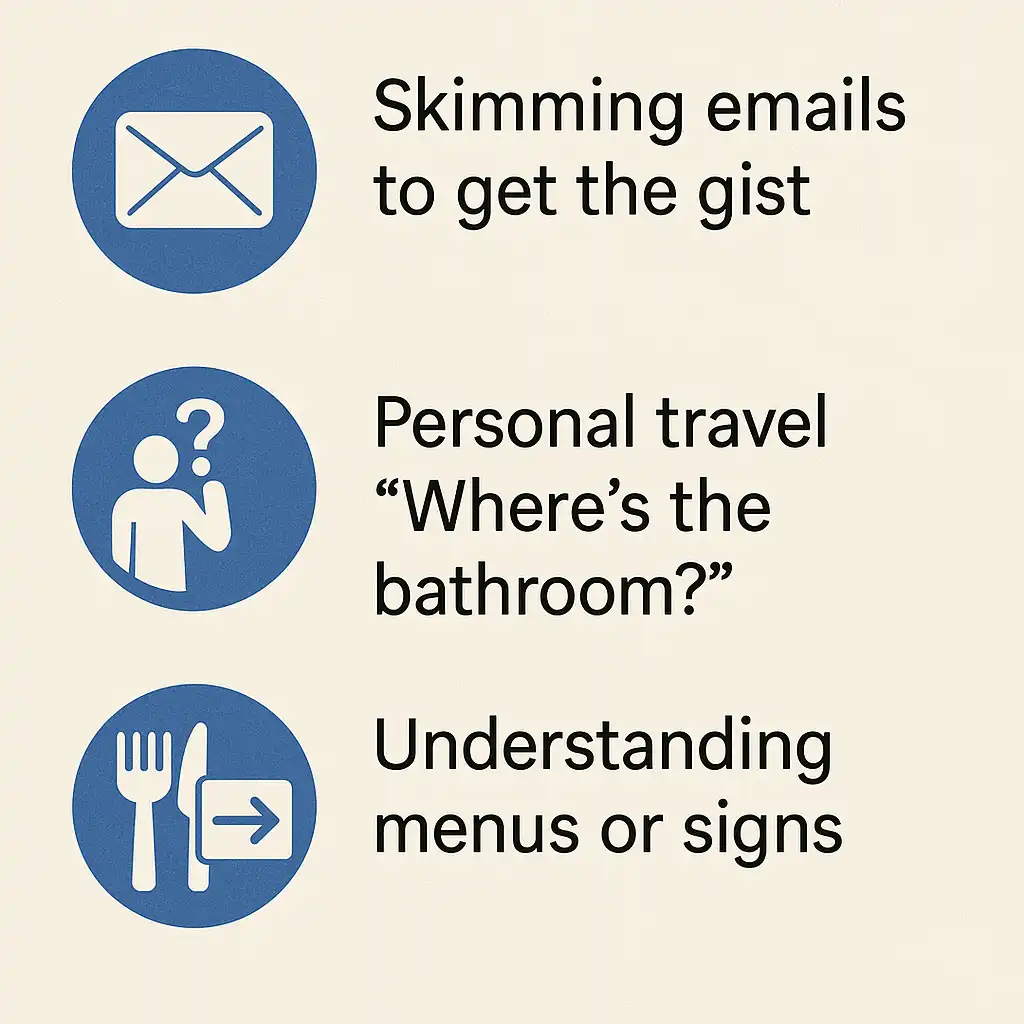Google Translate fails for Chinese more often than you’d expect—sometimes with embarrassing or even damaging results.
Sure, it’s quick, free, and right there in your browser. With one click, it promises to bridge the language gap between English and Chinese.
If you’re serious about growing in Asia, this article will show you how to avoid expensive translation mistakes, and what smart businesses do instead.
You’ll also understand exactly how and why Google Translate fails for Chinese when precision matters.But what if that “bridge” is shaky? What if it cracks under pressure from real business needs—like your product page, a legal contract, or an ad campaign meant to impress investors?
This post is for you if:
- You’re trying to reach Chinese customers
- You care about sounding professional, trustworthy, or even human
- You’re using (or thinking of using) Google Translate as a shortcut
Inside, you’ll learn:
- Why Chinese is one of the hardest languages for machine translation
- What big brands got embarrassingly wrong
- What it costs to get it right—or get it wrong
If you’re serious about growing in Asia, this article will show you how to avoid expensive translation mistakes, and what smart businesses do instead.
Let’s dive in—and rethink that automatic “Translate” button before it backfires.
Table of Contents
- 🔹 Reason 1: Chinese Grammar and Context Can’t Be Auto-Guessed
- 🔹 Reason 2: It Doesn’t Localize for Audience, Region, or Style
- 🔹 Reason 3: One Bad Translation = Lost Trust (or Worse)
- 🔎 What Are the Limits of Google Translate in Chinese?
- ✅ When Is Google Translate OK for Chinese?
- 🛠 What Should You Do Instead?
- 💡 Want to Sound Like a Local? Here’s How
- 📣 Final Thoughts: Clarity = Conversion
- 💬 Need Help? Let’s Talk.
🔹 Reason 1: Why Google Translate Fails for Chinese Grammar and Context
Unlike English, Chinese is context-dependent and lacks many grammatical markers. One word can have multiple meanings based on sentence structure, tone, or even subtle cultural cues.
For example, the word “上” can mean “up,” “go to,” “attend,” or “previous” depending on usage.
Even native Chinese speakers rely heavily on context to determine meaning. Machine translation often treats words in isolation, not understanding how they interact.

Example:
- If you’re translating: “He went to the bank,” Google might confuse “bank” (financial institution) with “沿岸” (riverbank).
- Or it might translate “interest” as “兴趣” (personal interest) instead of “利息” (financial interest).
The stakes get higher when working with legal contracts, product manuals, medical information, or marketing slogans. A small mistake can change the tone, meaning, or legality of your message.
This is where professional Chinese translation services make all the difference.
According to a 2023 TAUS stuhttps://www.taus.net/think-tank/reports/translation-quality-evaluationdy, machine-translated Chinese business and legal texts had an average semantic error rate of 38%.
🔹 Reason 2: How Google Translate Fails for Chinese Localization and Style
Chinese isn’t just one language. There’s Simplified Chinese (used in Mainland China), Traditional Chinese (used in Taiwan and Hong Kong), and then regional nuances, idioms, slang, and tone preferences.
Google Translate doesn’t ask who your audience is. It doesn’t know:

If you’re speaking to young consumers or retirees
If your tone should be polite, casual, or formal
Whether your product is being marketed in Beijing, Taipei, or Singapore
Stat to know: According to CSA Research, 65% of global consumers prefer content in their own language even if it’s poor quality — but in China, expectations are even higher. A 2022 report by iResearch shows that 78% of Chinese consumers distrust poorly localized websites.
Real-world example:
McDonald’s China doesn’t translate slogans directly. “I’m Lovin’ It” became “我就喜欢” — not a literal translation, but one that feels authentic, rhythmic, and emotionally resonant.
On the other hand, a literal translation might end up sounding awkward or even nonsensical.
Important note: Tone is critical in Asian cultures. A message that sounds “friendly” in English might sound “flippant” or “unprofessional” if translated too casually in Chinese.
Asian language localization must account for cultural nuance, not just dictionary definitions.
This is where professional Chinese translation services make all the difference.
In fact, many multilingual companies have documented how Google Translate fails for Chinese legal content, putting compliance and reputation at risk.
🔹 Reason 3: How Google Translate Fails for Chinese Brands and Trust
Using Google Translate may seem harmless, but it can lead to hilarious — or disastrous — results.
Infamous examples:

KFC’s slogan mishap: “Finger-lickin’ good” once became “吃掉你的手指” (“Eat your fingers off”) in early Chinese campaigns.
Beijing hotel sign: Translated “施工中” (“Construction in progress”) as “Execution in progress.”
These mistakes aren’t just laughable. They can erode trust, damage brand reputation, and send customers running.
Stat to consider: The EU Commission found that 72% of users will leave a poorly translated site — without completing a purchase or inquiry. In China, where digital competition is fierce, even minor language mistakes can lose you a lead.
Chinese localization services help avoid these brand-damaging pitfalls.
Chinese localization services help avoid these brand-damaging pitfalls.
It’s not just about fixing words—it’s about avoiding where Google Translate fails for Chinese trust-building.
🔎 What Are the Limits When Google Translate Fails for Chinese?
Here are a few very specific weaknesses:

No understanding of tone: Google doesn’t know when to use 敬语 (polite/formal Chinese) vs. casual tone.
No marketing flair: Taglines, call-to-actions, and metaphors often fall flat.
Font compatibility issues: Auto-translated Chinese text may use incorrect or incompatible characters for the region.
Idioms: Chinese is full of chengyu (成语), idioms that can’t be literally translated — yet Google often tries.
Example:
- Translating “kill two birds with one stone” literally becomes “用一块石头打两只鸟” — understandable, but not idiomatic.
- Native equivalent: 一箭双雕 (one arrow, two eagles).
To avoid this, businesses should invest in native-sounding Chinese translations that resonate.
Otherwise, they fall into the same trap where Google Translate fails for Chinese nuance.
✅ When (If Ever) Is Google Translate Not Failing for Chinese?
To be fair, there are some use cases where Google Translate might be fine:

But even then, users should be cautious. For any public-facing, professional, or customer-facing content — human review is essential.
Don’t wait until Google Translate fails for Chinese in a high-stakes context.
🛠 What Should You Do Instead?
Here’s a simple decision framework:
| Type of Content | Use Google Translate? | Recommended Action |
|---|---|---|
| Casual messages / travel | ✅ OK | Use with caution |
| Social media / slogans | ❌ No | Hire native copywriter |
| Product listings | ⚠️ Maybe | AI + human post-editing |
| Legal / technical documents | ❌ No | Certified translator + QA |
| Website / app localization | ❌ No | Full Chinese localization service |
💡 Want to Sound Like a Local? Here’s How
Step-by-step action plan:
- Audit your existing Chinese content (or lack thereof)
- Identify key business touchpoints: website, onboarding, help center, payment pages
- Prioritize: Which areas affect revenue or reputation the most?
- Partner with a Chinese translation company that offers:
- Human translation
- Native review
- Local marketing sense
- Terminology management
- Test: Try one landing page, one brochure, or one campaign
📣 Final Thoughts: Clarity = Conversion
In Chinese, clarity and tone carry even more weight than in English. What you say must not only be correct — it must feel right.
Using Google Translate for Chinese might feel efficient in the moment, but it risks:
- Sending the wrong message
- Losing trust
- Missing out on business
In a market where first impressions often happen online, your words are your brand.
Don’t settle for less when Google Translate fails for Chinese business communication.
💬 Need Help? Let’s Talk.
At AZ-Loc, we help businesses like yours communicate clearly in Chinese. Whether it’s:
- Website localization
- Product listings
- Brand messaging
…we offer native-level accuracy, cultural fluency, and business clarity.
🎯 Free offer: Send us a short sample and we’ll edit it for free — so you can feel the difference.
READ MORE:How Long Does It Take to Translate a Chinese Document?
